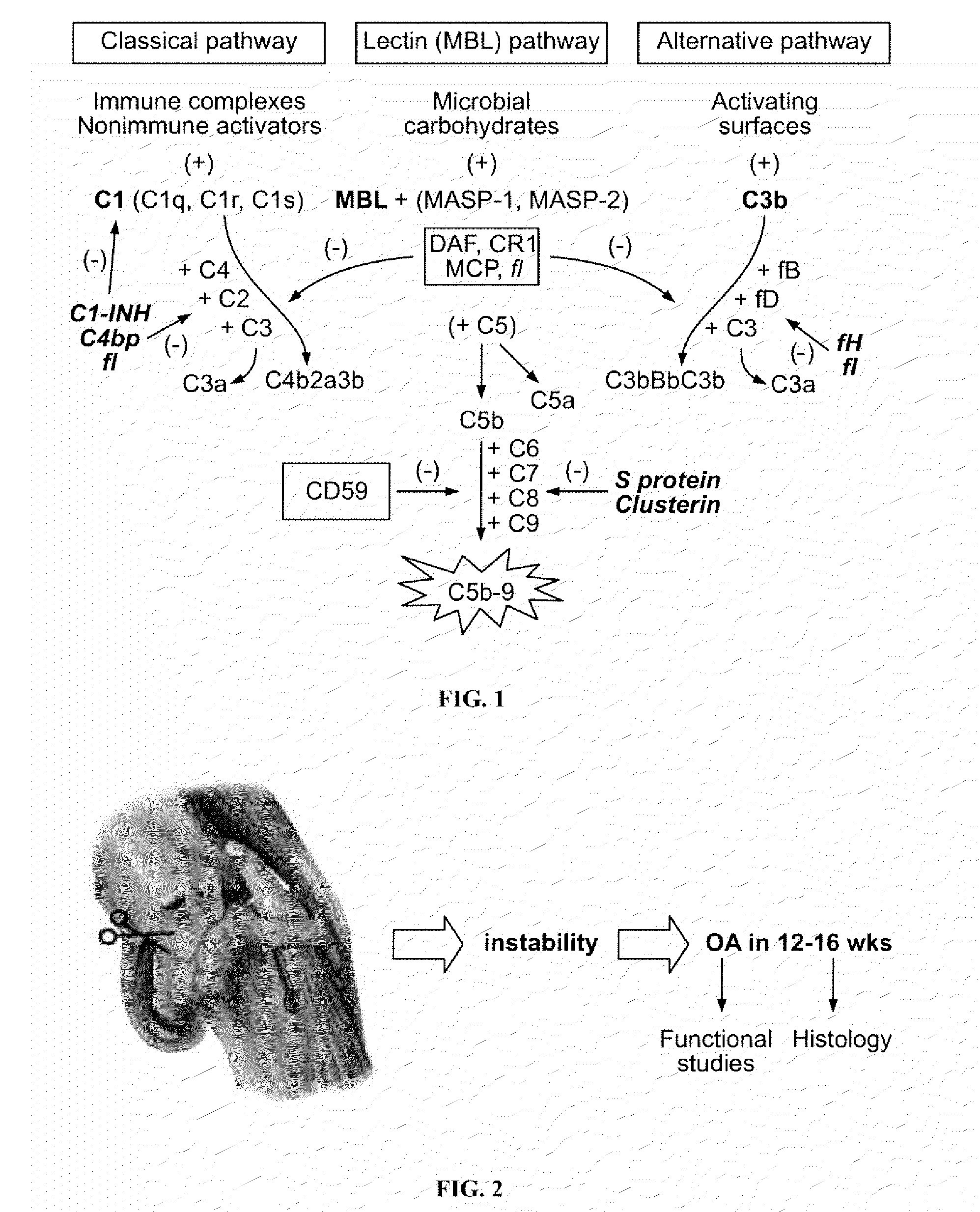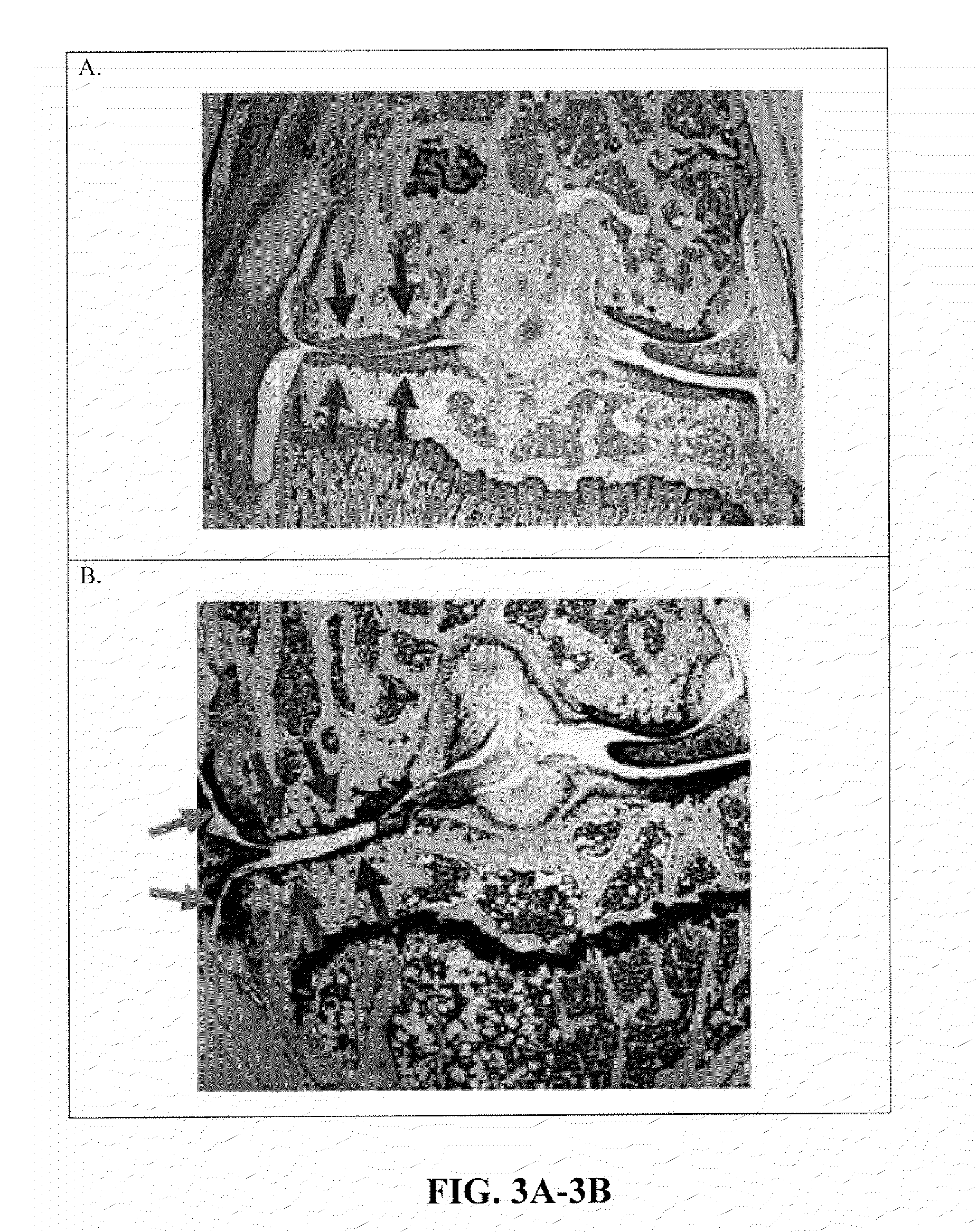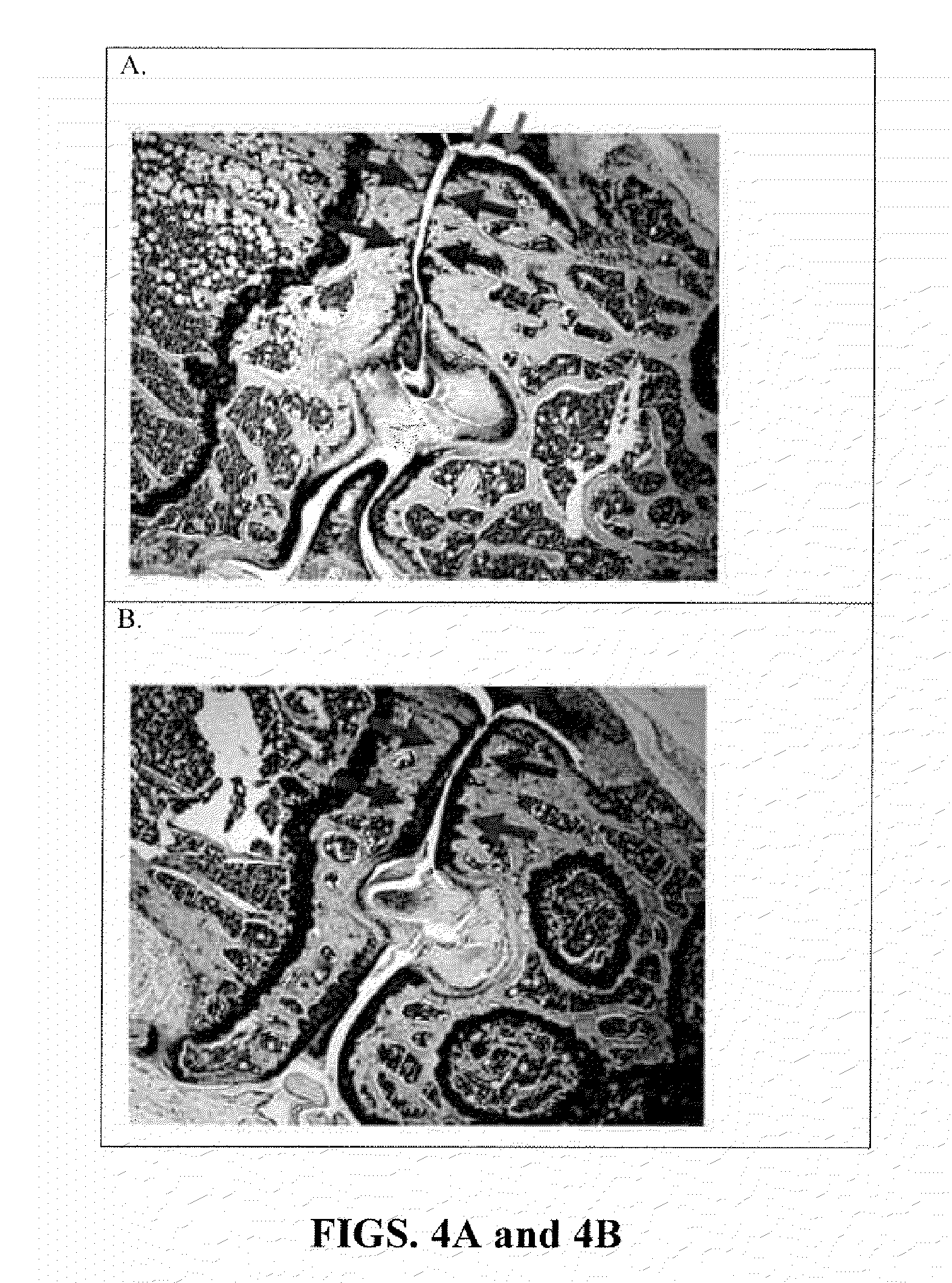Complement inhibitory agents as therapeutics in posttraumatic and degenerative arthritis
- Summary
- Abstract
- Description
- Claims
- Application Information
AI Technical Summary
Benefits of technology
Problems solved by technology
Method used
Image
Examples
example 1
Animal Model of Osteoarthritis and Studies in Wildtype Mice and Complement Component 5 (C5) Knock-Out Mice
[0134]Complement component 5 (C5) deficient mice were generated by backcrossing the C5-deficient DBA / 2 strain onto a C57BL / 10 background to give the B10D2oSn-J strain (Mastellos, D. et al., J. Immunology, 166(4):2479-86 (2001)). The B10D2oSn-J strain bears a 2-bp (TA) deletion in an exon near the 5′ end of the C5 gene. This deletion results in the expression of a truncated protein that accounts for the C5 protein deficiency. C57BL / 6 (B6) wildtype mice were obtained from a commercial vendor.
[0135]Surgical ligation of the stifle ligament and medial meniscectomy in wildtype and C5 knock out mice was performed (Stanton, H. et al., Nature, 434:649-52 (2005); Clements, K. M. et al., Arthritis Rheum. 48:3452-63 (2003)). Briefly, the mice were anesthetized, and the left stifle ligament exposed and severed with a scalpel, the medial meniscus removed, and skin glue used to close the wound...
example 2
Generation of Animals Genetically Deficient for Complement Components
[0136]Mice genetically deficient for factors representing various catalytic arms of the complement pathway (C3, C4, C5, C6, MBL, factor B), anaphylatoxin receptors (C5 receptor), and natural inhibitors (CD59) of the complement system are generated and examined to determine the roles of these factors in the development of osteoarthritis. Each of the mouse strains listed in the table below is tested for an osteoarthritis phenotype following surgical joint injury. Transgenic mice overexpressing a natural complement inhibitor (Crry) are studied to determine if they are protected against development of osteoarthritis.
Pathway / Role inComplement SystemGeneSource of mouse strainCentral common pathwayC5-deficientJackson # 000461C3-deficientJackson # 003641Classical pathwayFcRy-deficientTaconic Farms #000583Rag1-deficientJackson # 002216Igh-6-deficientJackson # 002249(heavy chain of IgM)C4-deficientV. M. Holers(Univ. Colorado...
example 3
Quantitative Assay on Degree of Osteoarthritis in Wildtype and C5-Deficient Mice
[0137]Groups of C5-deficient (n=5; C57BL / 10 (B10) background) and wildtype B10 control (WT, n=5) mice were surgically-induced to develop degenerative osteoarthritis, as described in Example 1, After 4 months, the mice were sacrificed, the stifle joint was harvested, fixed in paraformaldehyde, decalcified, and sections stained with toluidine blue. The stained stifle joint sections were visualized and scored for the degree of posttraumatic osteoarthritis by a blinded examiner, using a previously described scoring system (Bendele A. M., J. Musculoskelet. Neuronal Interact., 2:501-3 (2002)). In brief, a composite scoring system was used to quantitate the degree of degenerative osteoarthritis in histology sections derived from the surgically-induced mice. The degenerative arthritis or “OA score” was based depth of proteoglycan loss in each joint quadrant (femoral-media, femoral-lateral, tibial-medial, tibial-...
PUM
 Login to View More
Login to View More Abstract
Description
Claims
Application Information
 Login to View More
Login to View More - R&D
- Intellectual Property
- Life Sciences
- Materials
- Tech Scout
- Unparalleled Data Quality
- Higher Quality Content
- 60% Fewer Hallucinations
Browse by: Latest US Patents, China's latest patents, Technical Efficacy Thesaurus, Application Domain, Technology Topic, Popular Technical Reports.
© 2025 PatSnap. All rights reserved.Legal|Privacy policy|Modern Slavery Act Transparency Statement|Sitemap|About US| Contact US: help@patsnap.com



